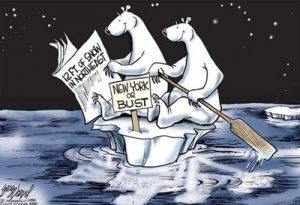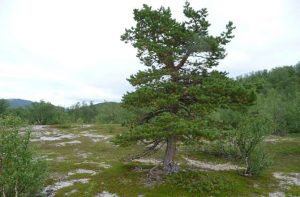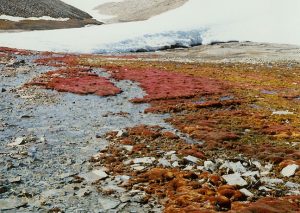
Global warming is not a new phenomenon, with the effects well documented in the latest IPCC Report (IPCC, 2013). But how damaging is warming in the polar region? The effects on cute species are well advertised (cue polar bears), but what about the effects on the less cute Arctic plant communities?
Getting Greener
A common belief is that plant communities are able to adapt to warmer temperatures and altered cloud cover and increase photosynthesis, as seen in Toolik, Arctic Alaska, where a study found significant warming effects and environmental changes in the vegetation community over several decades (Hobbie et al., 2017), including higher plant biomass and satellite Normalised Difference Vegetation Index (NDVI-determines from satellite imagery if there is live vegetation in the study site).
The increasing temperatures also indirectly affected the Arctic vegetation through warming of the permafrost 20m below the surface which resulted in melting and erosion of previously frozen soil, leaving more thawed soil cover for plants to colonise (Hobbie et al., 2017).
Gassy Greens

Most plants, such as pine trees, emit “biogenic volatile organic compounds (BVOCs)”: gases that can contribute to atmospheric aerosol formation (Kramshøj et al., 2016). BVOCs are dependent on temperature and light and arctic emissions are expected to be affected by increasingly higher temperatures, changing cloud cover and changing vegetation composition (Kramshøj et al., 2016). In fact, warming caused a 260% increase in total arctic ecosystem emissions, including a 90% increase solely from plants (Kramshøj et al., 2016)!
The composition of the vegetation in the arctic is changing, with a shift towards more shrubs, pines and other tall, dense, gassy BVOC vegetation (Makoto et al., 2015). As expected, many animals that rely on Tundra vegetation (lichens, mosses, grasses) for food, shelter and breeding grounds are being squeezed into the remaining pockets of shrinking Tundra, and are unfortunately dwindling in population numbers as a result. Sadly, the most likely consequence of this shift is a devastating total ecosystem collapse (ACIA, 2004).

As well as altering the biodiversity in the ecosystem, warming also alters physical processes that occur in the Arctic, particularly surface albedo (reflection of sunlight and radiation against the snow). As the snow melts, the NDVI increases so less energy can be reflected back to space, meaning surface temperatures continue to increase in a negative loop (Euskirchen et al., 2016).
Warming isn’t good.
It makes the existing vegetation emit harmful gasses and chemicals that contribute to more warming, and invites more forest suited vegetation into the ecosystem and completely changes it, making thousands of pre-existing animals homeless and without food.
But it isn’t all doom and gloom (yet). Advanced technologies providing climate data are helping educate people on the importance of reducing their emissions that contribute to the greenhouse effect and global warming and the impacts they are having on the rest of the world, encouraging the public to adapt their actions to ways that are more planet friendly.
Because after all, who wants to be responsible for the disappearance of all the cute Arctic animals? (And plants)
Read More:
http://www.amap.no/documents/doc/impacts-of-a-warming-arctic-2004/786
http://www.greenfacts.org/en/arctic-climate-change/l-3/4-arctic-tundra.htm
References
ACIA (2004). Impacts of a Warming Arctic: Arctic Climate Impact Assessment. Cambridge University Press.
Euskirchen, E., Bennett, A., Breen, A., Genet, H., Lindgren, M., Kurkowski, T., McGuire, A. and Rupp, T. (2016). Consequences of changes in vegetation and snow cover for climate feedbacks in Alaska and northwest Canada. Environmental Research Letters, 11(10), p.105003.
Hobbie, J., Shaver, G., Rastetter, E., Cherry, J., Goetz, S., Guay, K., Gould, W. and Kling, G. (2017). Ecosystem responses to climate change at a Low Arctic and a High Arctic long-term research site. Ambio, 46(S1), pp.160-173.
IPCC (2013). Summary for Policymakers. In: Climate Change 2013: The Physical Science Basis. Contribution of Working Group I to the Fifth Assessment Report of the Intergovernmental Panel on Climate Change [Stocker, T.F., D. Qin, G.-K. Plattner, M. Tignor, S.K. Allen, J. Boschung, A. Nauels, Y. Xia, V. Bex and P.M. Midgley (eds.)]. Cambridge University Press, Cambridge, United Kingdom and New York, NY, USA.
Kramshøj, M., Vedel-Petersen, I., Schollert, M., Rinnan, Å., Nymand, J., Ro-Poulsen, H. and Rinnan, R. (2016). Large increases in Arctic biogenic volatile emissions are a direct effect of warming. Nature Geoscience, 9(5), pp.349-352.
Makoto, K., Bryanin, S., Lisovsky, V., Kushida, K. and Wada, N. (2015). Dwarf pine invasion in an alpine tundra of discontinuous permafrost area: effects on fine root and soil carbon dynamics. Trees, 30(2), pp.431-439.
Word Count: 500
Recent Comments